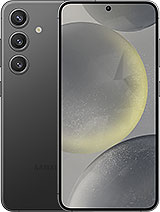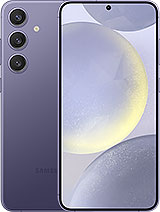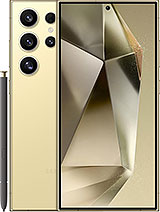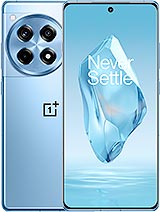Pre-orders for the new iPhone 16 series opened on Friday last week and the new Apple phones go on sale this Friday. Now the big question is should you buy one? And if not, what then? Last week we focused on refurbished iPhones as an option. This week we’ll focus on what’s available in the Android world.
We start with Google. The Pixel 9 has a 6.3” OLED display, not LTPO, but it runs at 120Hz (which makes the iPhone 16’s 60Hz display feel dated). The Tensor G4 is no match for the Apple A18 in general performance, but it handles Google’s AI features just fine — and those AI features are already in the works, while Apple is still trying to catch up. The phone has a 50MP main camera and a 48MP ultra wide, an upgrade that the iPhone 16 didn’t have (it did get a minor upgrade to a 12MP ultra wide).
![]()
Google Pixel 9
Read our review
12/128GB – $800 at Amazon US 12/256GB – $900 at Amazon US
The Pixel 9 has Satellite SOS (and other 9-series models have the same), but there’s no general Chat over Satellite. However, with iOS 18, iPhone 14 and newer models will be able to use the Messages app to chat with friends and family even outside of network coverage. This only works in the US and Canada, but we expect the feature to expand to new regions next year.
The Google Pixel 9 Pro features a 6.3” LTPO panel with a higher pixel density, making it a better fit for the iPhone 16 Pro’s new 6.3” LTPO display. It has the vanilla model’s 50MP main and 48MP ultra wide (matching the 16 Pro’s new 48MP ultra wide here), plus a 48MP 5x (113mm) periscope – making it better than Apple’s 12MP 5x (120mm) periscope. Plus, the Pixel Pro has a new 48MP ultra wide (17mm) selfie camera – an upgrade that iPhones could get next year. Note what we said above about the Tensor G4 and Satellite SOS.
![]()
Google Pixel 9 Pro
Read our review
16/128GB – $1,000 at Amazon US 16/256GB – $1,100 at Amazon US 16/512GB – $1,220 at Amazon US
The Google Pixel 9 Pro XL comes in at a 6.8″ display against the iPhone 16 Pro Max. Considering the slightly different aspect ratio, the Pixel display is about 5% smaller in terms of surface area. Everything else is the same as the smaller Pro model and the same applies to the iPhones as well. One thing left to mention is that both Google and Apple have increased wired and wireless charging speeds this year. We’ve already tested the Pixels, expect results from the iPhones soon.
![]()
Google Pixel 9 Pro XL
Read our review
16/128GB – $1,100 at Amazon US 16/256GB – $1,200 at Amazon US 16/512GB – $1,320 at Amazon US
Apple doesn’t have a foldable yet, we just keep seeing delay rumors. But Google does and the second generation makes some significant usability upgrades. The Pixel 9 Pro Fold has a 6.3” (20:9) cover display and an 8.0” inner display (both 120Hz, the inner one is LTPO). The 48+10+10MP triple camera isn’t as capable as the other 9 Pros, but that’s a common problem with foldables. Still, just like AI, Google is way ahead of Apple when it comes to new mobile form factors.
![]()
google pixel 9 pro fold
Read our review
16/256GB – $1,800 at Amazon US 16/512GB – $1,920 at Amazon US
The Google Pixel 8a is a relatively affordable alternative to the 9-series. However, the 9a is expected to arrive by the end of the year, so you should wait. A major upgrade would be the more efficient Tensor G4 chipset as the G3 inside the Pixel 8a isn’t great. Still, this model will be supported for 7 years, so you can buy one now and not worry about replacing the phone until 2031.
![]()
google pixel 8a
$100 off
Read our review
8/128GB – $400 at Amazon US
Just like Google, in fact, thanks to Google, Samsung launched Galaxy AI this year. It started with the Galaxy S24 series and was rolled out to older models as well. Just like Google, Samsung is also offering 7 years of support to the S24 series.
The Samsung Galaxy S24 has a 6.2” 120Hz OLED display, and finally has an LTPO panel. The camera setup hasn’t seen a major upgrade in a while and consists of a 50MP main, 10MP 3x (67mm) tele and 12MP ultra wide. There’s no satellite connectivity here and charging is still done at 25W wired and 15W wireless.

Samsung Galaxy S24
(256GB) $80 off
Read our review
8/128GB – $800 at Amazon US 8/256GB – $780 at Amazon US
The Samsung Galaxy S24+ has a 6.7-inch display, QHD+ LTPO (hooray!) and 45W charging for the battery. However, the camera is the same as the smaller S24. Again, the S24 series doesn’t have any kind of satellite connectivity, so Samsung is behind on this front.

Samsung Galaxy S24+
$220 off
Read our review
12/256GB – $800 at Amazon US 12/512GB – $900 at Amazon US
The Samsung Galaxy S24 Ultra appears to be the only phone to get a camera upgrade. It has a 200MP main sensor, two telephoto modules (50MP 5x 111mm periscope and 10MP 3x 67mm) and a 12MP ultra wide camera. The S Pen is unique to the S Ultra series and turns the 6.8” LTPO OLED display into a canvas for notes and sketches.

Samsung Galaxy S24 Ultra
$240 off
Read our review
12/256GB – $1,060 at Amazon US 12/512GB – $1,170 at Amazon US
OnePlus is launching a new flagship soon, but it’s worth giving a brief mention to the OnePlus 12 – it’s a relatively affordable phone with a Snapdragon 8 Gen 3 and a 6.82″ QHD+ LTPO display. And alongside the 50MP main is a 64MP 3x (70mm) tele and a 48MP ultra wide. Plus, the big 5,400mAh battery supports 80W wired charging and 50W wireless charging.

oneplus 12
$100 off
Read our review
12/256GB – $700 at Amazon US 16/512GB – $800 at Amazon US
The OnePlus 12R is even cheaper and pairs the older Snapdragon 8 Gen 2 with a 6.78″ LTPO display. The camera is somewhat basic with a 50MP main, 8MP ultra wide and no tele. The 5,500mAh battery only supports 80W wired charging, not wireless. Also note the lower water resistance rating, IP64.

OnePlus 12R
$50 off
Read our review
8/128GB – $450 at Amazon US 16/256GB – $550 at Amazon US







